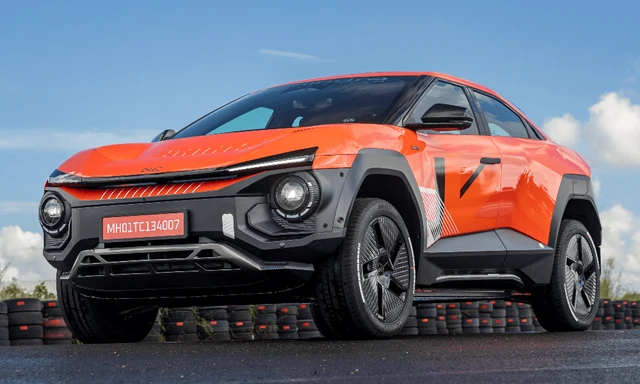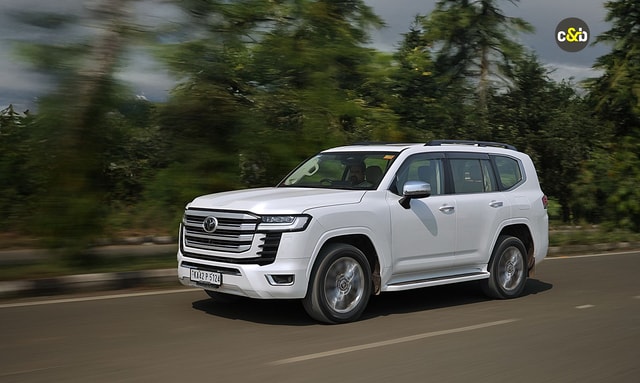A Look Back at the 1957 Ferrari 250 Testa Rossa

One of the few race cars built on the Ferrari 250 is the Ferrari 250 Testa Rossa. In the 1950s and 1960s, the great car served as inspiration for some of the most well-known automobiles. It was aiming to be among the most successful Ferraris of all time, winning several championships during its heyday. The Testa Rossa became one of the most desired automobiles due to its triumphs, stunning design, and limited production. In addition, it was one of the most expensive Ferraris ever built.

Exterior and interior of the Ferrari 250 Testa Rossa
The tubular steel frame of the 1957 Testa Rossa 250 was used. Independent, coil springs, unequal-length wishbones, and hydraulic shock absorbers were used in the front suspension. A live axle, coil springs, radius arms, and hydraulic shock absorbers were used in the rear suspension. Drum brakes, a 4-speed plus reverse transmission, worm and sector steering, a 140-liter gasoline tank, 5.50 x 16 front tires, and 6.00 x 16 rear tires were some of the car's other design features. The Testa Rossa also had a two-seater spider body with a 2350 mm wheelbase, 1308 mm front track, 1300 mm rear track, and a dry weight of 800 kg.
While the rare race vehicle with an entire inside may be found, this is not one of them. Instead, the Testa Rossa is an actual race vehicle, even if it is legally road legal due to the laxity of the laws. That implies there isn't even a roof, and the interior is devoid of any unnecessary items. Even yet, high-quality materials were employed, with leather seats and a wood steering wheel being the norm.

Racing History of the Testa Rossa
The year was 1957, and Ferrari was on the verge of winning the World Championship for Sports Cars for the fourth time in the previous five years, after a tough battle with Maserati and Jaguar.
However, rumours circulated in the paddock that the FIA was about to impose a three-litre engine capacity limit for the 2018 season due to the rising frequency of significant incidents.
When Enzo Ferrari heard the reports, he rallied his top engineers. He insisted that they enhance the current 500 TRC as soon as possible so that it would remain competitive and dominate every race it entered in the coming seasons.
He instructed Carlo Chiti, the main designer, that he needed a dependable automobile and that now was not the time for experimentation or failure.
Chiti, who was also working on the Ferrari 246 F1 racer at the time, was recognised for his creativity and desire to try new things. However, he took a cautious approach, developing a prototype alongside Andrea Fraschetti, one of Ferrari's most gifted engineers, who tragically died during a test drive that year.
They extended the wheelbase of a tubular steel spaceframe chassis taken from a 500 TR by 10 cm to 2.35 meters. It had an independent front suspension system that comes with a coil springs, while the rear axle was initially set up as a solid axle.
The prototype's body was built in a hurry to compete in the Nürburgring 1000 Km event and was based on a 290 MM designed by Scaglietti. A Colombo-designed 3.0-liter V12 from the 250 GT series was chosen to power the new race car; however, it was substantially modified for greater performance.

Competition
You may have noticed a period where the 250 did not win at Le Mans. Because of the Aston Martin DBR1 and a specific driver named Carroll Shelby, Ferrari did not win the overall championship in 1959. However, it also won at Spa and the Nurburgring and was widely regarded as the 250's main competitor. As a result, the DB4 would get a somewhat more prominent version of the car's engine, which was why it was always as great.
Trending News
 3 mins readMahindra XEV 9e vs XEV 9s: Spec Comparison
3 mins readMahindra XEV 9e vs XEV 9s: Spec Comparison 3 mins readMahindra XEV 9s Launched: In Pictures
3 mins readMahindra XEV 9s Launched: In Pictures
Latest News
 car&bike Team | Nov 29, 2025Maruti Suzuki e Vitara Launch On December 2: Here’s What We Know So FarThe e Vitara is the carmaker’s first shot in the electric vehicle segment, and here is everything that we know about it.4 mins read
car&bike Team | Nov 29, 2025Maruti Suzuki e Vitara Launch On December 2: Here’s What We Know So FarThe e Vitara is the carmaker’s first shot in the electric vehicle segment, and here is everything that we know about it.4 mins read car&bike Team | Nov 28, 2025Mahindra BE 6 Formula E Edition: Variants ExplainedThe BE 6 Formula E Edition is offered in two variants, FE2 and FE3, both paired with the larger 79 kWh battery pack.3 mins read
car&bike Team | Nov 28, 2025Mahindra BE 6 Formula E Edition: Variants ExplainedThe BE 6 Formula E Edition is offered in two variants, FE2 and FE3, both paired with the larger 79 kWh battery pack.3 mins read Bilal Firfiray | Nov 28, 2025Mahindra XEV 9e vs XEV 9s: Spec ComparisonMahindra has expanded its electric lineup with the all-new 7-seater XEV 9s. Being a third EV in the line-up after the eye-grabbing 9e, it's a good chance to compare the design, space, battery, range, pricing, and buyer suitability between these two siblings to help you decide which EV fits your needs.3 mins read
Bilal Firfiray | Nov 28, 2025Mahindra XEV 9e vs XEV 9s: Spec ComparisonMahindra has expanded its electric lineup with the all-new 7-seater XEV 9s. Being a third EV in the line-up after the eye-grabbing 9e, it's a good chance to compare the design, space, battery, range, pricing, and buyer suitability between these two siblings to help you decide which EV fits your needs.3 mins read Jafar Rizvi | Nov 28, 2025Honda Amaze Secures 5 Stars In Bharat NCAP Crash TestsThe sub-compact sedan scored 28.33/32 points in Adult Occupant Protection and 40.81/49 points in Child Occupant Protection.2 mins read
Jafar Rizvi | Nov 28, 2025Honda Amaze Secures 5 Stars In Bharat NCAP Crash TestsThe sub-compact sedan scored 28.33/32 points in Adult Occupant Protection and 40.81/49 points in Child Occupant Protection.2 mins read car&bike Team | Nov 27, 2025BMW F 450 GS Production Begins At TVS PlantTVS Motor Company and BMW Motorrad have announced a landmark achievement of 200,000 units produced under their partnership.1 min read
car&bike Team | Nov 27, 2025BMW F 450 GS Production Begins At TVS PlantTVS Motor Company and BMW Motorrad have announced a landmark achievement of 200,000 units produced under their partnership.1 min read car&bike Team | Nov 27, 2025Mahindra XEV 9S: Variants, Features, Prices ExplainedThe XEV 9S is offered in four variants, with three battery pack options. Here is a rundown of what each variant gets.3 mins read
car&bike Team | Nov 27, 2025Mahindra XEV 9S: Variants, Features, Prices ExplainedThe XEV 9S is offered in four variants, with three battery pack options. Here is a rundown of what each variant gets.3 mins read
 Seshan Vijayraghvan | Nov 29, 2025Mahindra XEV 9S First Drive Review: Big Electric SUV, Bigger ExpectationsThe XEV 9S lands at a time when the EV crowd is growing fast. It’s a big, born-electric, three-row SUV that starts under 20 lakh. It sits close to the XUV700 in size, but the brief is very different. Here’s what it’s like on the road.11 mins read
Seshan Vijayraghvan | Nov 29, 2025Mahindra XEV 9S First Drive Review: Big Electric SUV, Bigger ExpectationsThe XEV 9S lands at a time when the EV crowd is growing fast. It’s a big, born-electric, three-row SUV that starts under 20 lakh. It sits close to the XUV700 in size, but the brief is very different. Here’s what it’s like on the road.11 mins read Bilal Firfiray | Nov 26, 2025Tata Harrier EV vs Mahindra XEV 9e: Battle Of India’s Electric TitansWhen India made two electric SUVs battle it out, the winner is the buyer. They get a choice to take home what’s best suited for them – and read on to find out which one is better for YOU.1 min read
Bilal Firfiray | Nov 26, 2025Tata Harrier EV vs Mahindra XEV 9e: Battle Of India’s Electric TitansWhen India made two electric SUVs battle it out, the winner is the buyer. They get a choice to take home what’s best suited for them – and read on to find out which one is better for YOU.1 min read Janak Sorap | Nov 19, 2025Hero Xpulse 210 Vs Kawasaki KLX 230 Comparison Review: Dual-Sport DilemmaWith a price difference of just Rs 12,000, which of the two dual-sport motorcycles is meant for you?1 min read
Janak Sorap | Nov 19, 2025Hero Xpulse 210 Vs Kawasaki KLX 230 Comparison Review: Dual-Sport DilemmaWith a price difference of just Rs 12,000, which of the two dual-sport motorcycles is meant for you?1 min read Jaiveer Mehra | Nov 17, 20252025 Toyota Land Cruiser 300 Review: Beast From The EastThe Land Cruiser name may have a long and storied history, but does it fit the bill for an Rs 2 crore-plus SUV in India?13 mins read
Jaiveer Mehra | Nov 17, 20252025 Toyota Land Cruiser 300 Review: Beast From The EastThe Land Cruiser name may have a long and storied history, but does it fit the bill for an Rs 2 crore-plus SUV in India?13 mins read Seshan Vijayraghvan | Nov 17, 2025Kia Syros 1.0 Turbo Petrol: 6000 km Long-Term Review – Final Report!I lived with the Syros for more than 6000 km, over 3 months, and in this final report, I am going to talk about the Pros, the Cons, and everything in between.1 min read
Seshan Vijayraghvan | Nov 17, 2025Kia Syros 1.0 Turbo Petrol: 6000 km Long-Term Review – Final Report!I lived with the Syros for more than 6000 km, over 3 months, and in this final report, I am going to talk about the Pros, the Cons, and everything in between.1 min read


































































































































